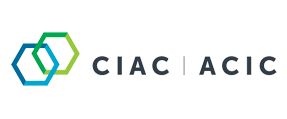A Strong End to 2020 and cautious optimism with tailwinds into 2021
January 27, 2021
Industrial chemicals outperform manufacturing in November with 1.7% growth from October
Industrial chemical shipments rose 1.7 per cent in November on the back of a 2.8 per cent surge in shipment for resin and synthetic rubber products. This was more than enough to offset a 2.6 per cent decline in basic chemicals shipments. The final months of 2020 saw all resin and basic chemical sub–sectors, except for inorganic chemicals, shipments recover to near the five–year average.
The potential for a resurgence of COVID-19, particularly in Asia as we approach the Lunar New Year, could render the best forecasts moot. That said, Canada’s chemical sector enters 2021 with a few tailwinds behind its back. The supply chain disruptions that occurred in the spring of 2020 and the rapid rebound in demand a few months later resulted in a drawdown of inventories to multi-year lows.
Uneven demand recovery in downstream sectors and a very active hurricane season in the US Gulf Coast have led to a staggered production and output recovery which has kept North American demand/supply balances very narrow. CIAC expects to see strong counter–seasonal demand early in 2021 as companies rebuild inventories ahead of the busier spring and summer months.
This of course does not mean the recovery is complete and chemical products that have seen their downstream markets severely impacted continue to face headwinds. Products destined for transportation end markets (fuels, de-icing, lubricants, and additives) have been volatile and with significant capacity still to return to market margins remain under pressure. But as the calendar turned to 2021 oil and gas drilling has begun to pick up. Furthermore, inventory drawdowns were not limited to industrial chemicals, re-stocking is occurring across the supply chain. Additional demand is expected as COVID-19 restrictions ease into the spring and summer and more parts of the economy re-open.
Recent reports of multi-year highs for North American export prices of basic chemical and resin products such as linear low density polyethylene (LLDPE), high-density polyethylene (HDPE), polypropylene (PP), PVC, methanol, chlor-alkali, bode well for improved margins in Q1 2021. The American Chemistry Council noted similar trends in the 2021 Outlook released earlier this year. Early Q4 earnings results show integrated chemical companies estimating low to single digit growth across product lines. Automotive and aerospace segments face headwinds into 2021 with uncertain near-term demand.
“We are cautiously optimistic heading into 2021. We are seeing some good trends in resin markets with very robust demand down the product value chain,” says Bob Masterson, President and CEO of CIAC.
“Chemistry is a global business. We need to make sure Canada is competitive when the next wave of investment decisions is made. Last year, Alberta released the Alberta Petrochemical Incentive Program (APIP), a long-term plan to attract capital investment to the chemical sector. Chemistry is a growth business and we know that if you are standing still you are getting left behind. It is critical we attract new large-scale capital investments.
“We know that for the next round of investments companies are looking at feedstock cost, turnaround time and greenhouse gas intensity. Canada has abundant and diverse low-emissions feedstock, world-class storage and transportation infrastructure and growing markets for these products. We already know that governments of all levels are looking to capture that kind of investment and we need to see it here.”







